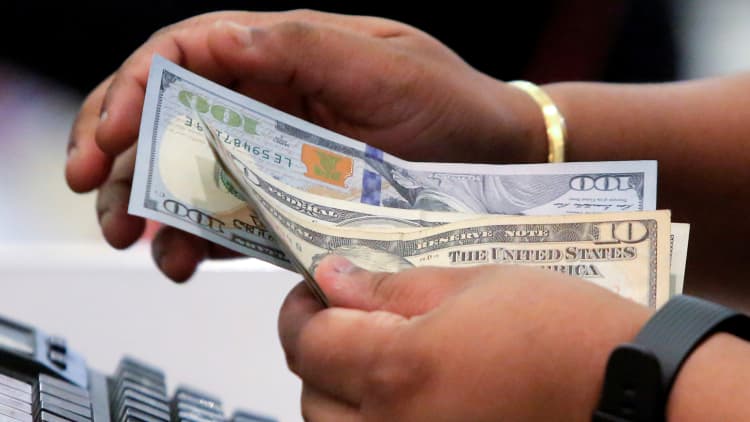
Keeping up with credit card debt is getting more difficult.
Americans now owe $1.12 trillion on their credit cards, the Federal Reserve Bank of New York reported Tuesday.
The average balance per consumer stands at $6,218, up 8.5% year over year, according to a separate quarterly credit industry insights report from TransUnion.
“Consumers continue to use credit, and in particular credit cards, as they navigate the world we face right now,” said Charlie Wise, TransUnion’s senior vice president of global research and consulting.Â
Higher prices and higher interest rates have put many households under pressure and prices are still rising, albeit at a slower pace than they had been.
The consumer price index â a key inflation barometer â has fallen gradually from a 9.1% pandemic-era peak in June 2022 to 3.4% in April.
Young adults, especially, have had to stretch financially to cover rising rents, ballooning student loan balances and larger auto loan payments, Wise said.
“Rent, when you have it, auto loans, utilities, these are all things consumers prioritize ahead of credit cards,” Wise added.
As a result, credit card delinquency rates are higher across the board, the New York Fed and TransUnion found. Over the last year, roughly 8.9% of credit card balances transitioned into delinquency, the New York Fed reported.
According to TransUnion’s research, “serious delinquencies,” or those 90 days or more past due, reached the highest level since 2010.
More from Personal Finance:
More Gen Z cardholders are maxed out, New York Fed finds
Americans can’t stop ‘spaving’ â how to avoid this financial trap
Shoppers embrace ‘girl math’ to justify luxury purchases
Overall, an additional 19.3 million new credit accounts were opened in the fourth quarter of 2023, boosted in part by subprime borrowers looking for cards with higher limits, according to Wise. Subprime generally refers to those with a credit score of 600 or below, according to TransUnion.Â
“Although access to credit and loans can provide a lifeline for families struggling to meet basic needs, relying too much on these financial coping strategies may lead to financial instability if families have a hard time keeping up with debt or do not recover from using savings not intended for routine expenses,” said Kassandra Martinchek, senior research associate at the Urban Institute.Â
This is ‘your highest-cost debt by a wide margin’
Credit cards are one of the most expensive ways to borrow money. The average credit card charges a near-record 20.66%, according to Bankrate.
“If you have credit card debt, this is probably your highest-cost debt by a wide margin,” said Ted Rossman, Bankrate’s senior industry analyst. “Paying it down needs to be a household priority.”
With an average annual percentage rate of 20%, if you made minimum payments toward the average credit card balance, which currently stands at $6,218, according to the TransUnion report, it would take you 18 years to pay off the debt and cost you more than $9,200 in interest, Rossman calculated.
“Try to pay way more than the minimum â pay it all if you can,” Rossman said.
Otherwise, switch to an interest-free balance transfer credit card “to pause the interest clock for up to 21 months,” he advised, “or take on a side hustle, sell stuff you don’t need or cut your expenses in order to dedicate more money to your debt payoff efforts.”
Read the original article here



